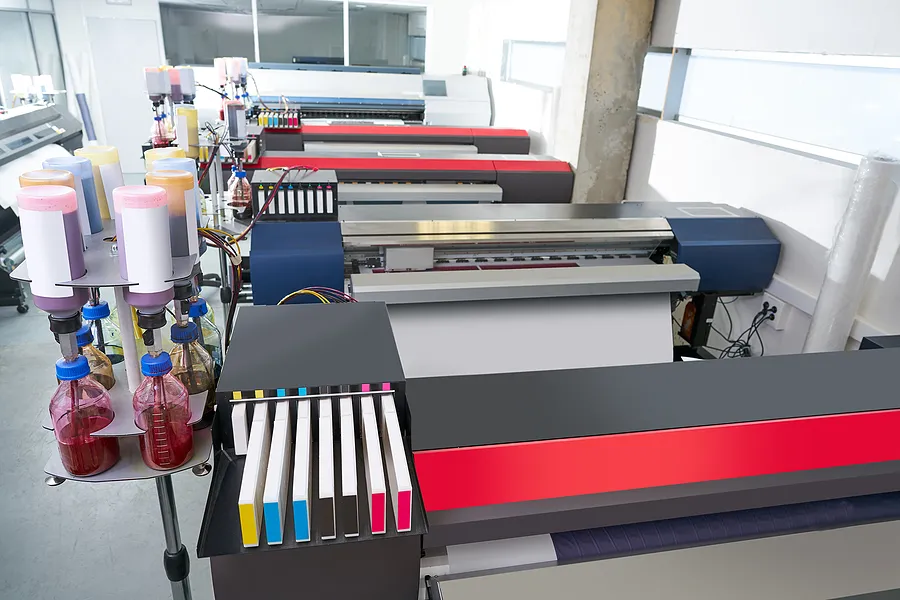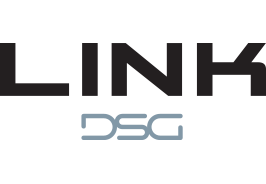Large format printing is a highly effective way to create attention-grabbing visuals and marketing materials for businesses of all types and sizes. From banners and posters to vehicle wraps and trade show displays, large format printing allows you to make a big impact and capture your audience's attention with brilliant promotional graphics.
However, with so many options and technical considerations involved in the process, it can be overwhelming to navigate the world of large format printing. In this comprehensive guide, we will cover everything you need to know about large format printing, including the benefits, the printing process, tips for success, and the benefits of hiring a professional service. Whether you are new to large format printing or looking to expand your knowledge, this guide will provide you with the information and resources you need to make informed decisions and achieve outstanding results.
What Exactly is Large Format Printing?
Large format printing refers to a printing process that produces high-quality prints with larger dimensions than traditional printing methods. This technique is commonly used to create large-scale graphics, such as banners, posters, billboards, trade show graphics, and wall murals.
Some great examples of large format printing are:
- Banners: Used for outdoor or indoor advertising, events, promotions, and more. Banners can be made of vinyl, mesh, or fabric and come in a variety of sizes and shapes.
- Posters: Printed on high-quality paper or vinyl, posters are perfect for promoting events, products, or services, and are commonly used in retail stores, movie theaters, and public spaces.
- Trade show graphics: Large format printing is often used to create eye-catching displays, backdrops, and signage for trade shows, conferences, and events.
- Wall murals: Printed on adhesive vinyl, wall murals can transform a room or space and are ideal for branding, advertising, or adding visual interest.
- Vehicle wraps: Large format printing is used to create custom designs that cover a vehicle's exterior, turning it into a mobile billboard or work of art.
- Billboards: Large-scale outdoor advertising that uses a variety of printing techniques, including digital printing and hand painting, to create high-impact visuals.
- Window graphics: Printed on adhesive vinyl, window graphics are perfect for storefronts, offices, and other businesses that want to promote their brand or products.
- Floor graphics: Printed on durable materials, floor graphics can be used to create custom designs that can be placed on floors, sidewalks, and other surfaces, adding a unique touch to events, retail spaces, and more.
Large format printing uses specialized printers and inks that can handle larger print sizes, typically ranging from 18 inches to several feet wide. This type of printing is also known as wide-format printing or grand-format printing, and it is commonly used in advertising, marketing, and promotional campaigns.
The Importance of Large Format Printing in the Printing Industry
Large format printing has become an essential part of the printing industry due to its ability to produce high-quality, visually stunning prints on a gigantic scale. Here are some reasons why large format printing is important in the printing industry:
- Versatility: Large format printing is a versatile printing technology that can be used for a wide range of applications, such as outdoor and indoor advertising, trade show displays, vehicle wraps, banners, posters, and more. This versatility makes large format printing a popular choice for businesses and individuals who need to create high-impact visuals for their marketing campaigns, events, or personal projects.
- High-quality prints: Large format printing allows for high-resolution printing on a larger scale, resulting in vibrant, sharp, and detailed prints that can capture the attention of viewers. Large format printing uses specialized inks, printers, and media that are designed to produce high-quality prints with long-lasting durability.
- Cost-effective: Large format printing is a cost-effective printing technology compared to traditional printing methods for large-scale projects. Since large format printing can print larger graphics in a single print run, it can reduce printing time and costs, making it more affordable for businesses and individuals to produce large-scale prints.
- Branding and advertising: Large format printing plays a crucial role in branding and advertising for businesses of all sizes. By producing high-quality, visually striking prints, businesses can promote their products or services, build brand awareness, and create a lasting impression on their target audience.
- Customization: Large format printing allows for customization of graphics, which means businesses and individuals can create unique designs that reflect their brand identity, marketing message, or personal style. This level of customization can help businesses stand out from their competitors and make a strong impact on their audience.
In summary, large-format printing has become an integral part of the printing industry due to its versatility, cost-effectiveness, high-quality prints, branding and advertising benefits, and customization options. As technology continues to evolve, we can expect to see more advancements in large-format printing that will further enhance its capabilities and applications.
Different Types of Large Format Printing
There are several types of large format printing, each with its own unique benefits and applications. Here are some of the most common types of large format printing:
- Inkjet Printing: Inkjet printing is the most popular type of large format printing. This printing method uses liquid ink sprayed onto the print material, which can be paper, vinyl, or fabric. Inkjet printing offers high-quality prints with vibrant colors and sharp detail.
- Dye-Sublimation Printing: Dye-sublimation printing uses heat to transfer dye onto a transfer paper, which is then transferred onto the print material, typically fabric. This printing method offers high-quality prints with excellent color saturation and durability. Dye-sublimation printing is commonly used for printing textiles, apparel, and soft signage.
- UV Printing: UV printing uses ultraviolet light to cure the ink as it's printed onto the print material, resulting in a durable, scratch-resistant print that's resistant to fading. UV printing is often used for printing on rigid substrates, such as metal, plastic, and glass.
- Solvent Printing: Solvent printing uses solvent-based inks that are heat-set onto the print material. This printing method offers durable prints that are resistant to water and fading. Solvent printing is commonly used for outdoor signage, such as banners, billboards, and vehicle wraps.
- Latex Printing: Latex printing uses water-based inks that are cured using heat. This printing method offers high-quality prints with excellent color saturation and durability. Latex printing is a more eco-friendly option than solvent printing since it uses water-based inks.
- Eye-catching visuals: Large format printing allows for the creation of visually stunning prints on a grand scale that can grab the attention of viewers. Whether it's a banner, poster, or vehicle wrap, large format prints can make a strong impact on their audience and create a lasting impression.
- Versatility: Large format printing can be used for a wide range of applications, from outdoor and indoor advertising to trade show displays and custom wallpaper. This versatility makes it a valuable tool for businesses and individuals who want to create unique and impactful visuals.
- Customization: Large format printing allows for customization of graphics, which means businesses and individuals can create designs that reflect their brand identity, marketing message, or personal style. This level of customization can help businesses stand out from their competitors and make a strong impact on their audience.
- Cost-effective: Large format printing can be a cost-effective printing technology compared to traditional printing methods for large-scale projects. Since large format printing can print larger graphics in a single print run, it can reduce printing time and costs, making it more affordable for businesses and individuals to produce large-scale prints.
- Durability: Large format prints are made with specialized inks and media that are designed to withstand harsh outdoor environments, making them a durable and long-lasting option for outdoor advertising and signage.
- Convenience: Large format printing can be a convenient option for businesses and individuals who need to produce large-scale prints quickly. Many large format printing services offer fast turnaround times and can handle everything from design to printing and installation.
- Visibility: Large format printing is ideal for creating signage, posters, and banners that are designed to be visible from a distance. This makes it an excellent choice for advertising or promoting events in public places such as malls, airports, or exhibition centers.
- Impact: Large format printing can create a strong visual impact on the audience due to its size and the use of vivid colors and high-resolution images. It can effectively grab the attention of passers-by and make a lasting impression on them.
- Versatility: Large format printing can be done on a wide range of materials such as vinyl, canvas, fabric, paper, and even wood. This makes it versatile and suitable for various applications, such as indoor or outdoor displays, trade shows, or even on building wraps.
- Cost-effective: Printing in a large format is often more cost-effective than printing in smaller sizes. It allows for more efficient use of materials, and the economies of scale can result in lower production costs.
- Customization: Large format printing offers greater customization options. The images can be scaled up to fit the size requirements, and there is ample room for adding text or other design elements. This allows for greater creativity and personalization in the final product.
- Durability: Large format prints are typically made with high-quality materials and inks, which make them more durable and resistant to fading or damage from external elements such as sunlight or water.
- Advertising and Marketing: Large format printing is an excellent way to create eye-catching displays for marketing and advertising purposes. Billboards, banners, posters, and window displays are just a few examples of how large format printing can be used to attract the attention of potential customers.
- Trade Shows and Events: Large format printing can be used to create trade show displays, event signage, and booth graphics. It can also be used to create stage backdrops, podium signs, and directional signage to help attendees navigate the event.
- Interior Design: Large format printing can be used to create custom wallpaper, murals, and artwork for interior design projects. It can also be used to create graphics for retail spaces, museums, and other public spaces.
- Construction and Architecture: Large format printing can be used to create architectural renderings, construction plans, and engineering drawings. It can also be used to create building wraps for construction sites, which can help advertise the upcoming development.
- Packaging and Labeling: Large format printing can be used to create custom packaging, labels, and stickers. This can be particularly useful for product launches or promotional events.
- Photography and Fine Art: Large format printing is an excellent way to reproduce fine art and photography. It allows for the creation of high-quality prints that can be displayed in galleries and museums.
- Print Quality: One of the most important factors to consider is print quality. Look for a printer that can produce high-resolution prints with vivid colors and sharp details. Consider the printer's ink technology, color range, and resolution capabilities to ensure it meets your quality requirements.
- Size and Capacity: Consider the size and capacity of the printer. Large format printers come in a variety of sizes, and you'll need to choose one that can handle the size of the prints you need. Also, consider the printer's capacity for paper or other materials, as well as its speed and efficiency.
- Cost: Large format printers can be a significant investment, so consider the total cost of ownership, including initial purchase price, ongoing maintenance costs, and the cost of consumables such as ink and paper. Consider how much you expect to print and how frequently you'll need to replace these consumables.
- Compatibility: Make sure the printer is compatible with the software and applications you'll be using to create and print your designs. Consider whether you'll need to invest in additional software or hardware to make the printer work with your existing workflow.
- Brand Reputation: Consider the reputation of the brand and the support offered. Look for a reputable brand that has a good track record of producing reliable and high-quality large format printers. Also, consider the availability of technical support and customer service.
- Specialty Features: Consider any specialty features you might need, such as the ability to print on a specific material, roll-to-roll printing, or automated cutting. These features can be critical for certain applications and industries.
- Inkjet Printers: Inkjet printers are the most popular type of large format printer. They use inkjet technology to print high-quality, photo-realistic images with sharp details and vibrant colors. Inkjet printers are available in a variety of sizes and are suitable for a wide range of applications, including fine art, photography, and signage.
- Dye Sublimation Printers: Dye sublimation printers use heat to transfer ink from a ribbon onto a special type of paper. The paper is then transferred onto a substrate, such as fabric or plastic, using heat and pressure. Dye sublimation printers are commonly used for printing onto textiles, such as T-shirts, banners, and flags.
- Solvent Printers: Solvent printers use solvent-based inks that are resistant to water and UV light. This makes them ideal for outdoor applications, such as banners, billboards, and vehicle wraps. Solvent printers are available in both roll-to-roll and flatbed formats.
- UV Printers: UV printers use UV-curable inks that are cured by exposure to UV light. This allows the ink to bond to a wide range of materials, including plastics, metals, and wood. UV printers are commonly used for printing on rigid substrates, such as signs, displays, and packaging.
- Latex Printers: Latex printers use water-based inks that are cured using heat. They are eco-friendly and produce high-quality prints with vivid colors and sharp details. Latex printers are suitable for both indoor and outdoor applications, including banners, posters, and wall graphics.
- Aqueous Printers: Aqueous printers use water-based inks that are ideal for printing onto paper-based substrates. They are commonly used for printing high-quality graphics, such as posters, photographic prints, and fine art.
- Design: The first step in the large format printing process is creating a design or artwork. This can be done using graphic design software such as Adobe Photoshop or Illustrator.
- Pre-Press: Once the design is created, it must be prepared for printing. This involves converting the design to the correct format for printing, such as PDF, and ensuring that the file is set up with the correct resolution, color mode, and bleed.
- Printing: The next step is to print the design onto the chosen material using a large format printer. Depending on the printer, the printing process may involve different types of inks and technologies, such as inkjet, solvent, UV, or dye-sublimation.
- Finishing: After the printing is complete, the material may require additional finishing processes. This can include cutting the material to size, laminating the print for added protection and durability, or mounting the print onto a backing material such as foam board or acrylic.
- Quality Control: Finally, the printed material is inspected to ensure that it meets the required quality standards. This can include checking for color accuracy, sharpness, and any defects or imperfections.
- Choose the Right Resolution: Make sure your artwork is set up with a high enough resolution (usually 300 dpi or more) to avoid pixelation or blurriness when printed at a larger scale.
- Use High-Quality Images: The quality of the final print is directly related to the quality of the original image. Use high-resolution images and avoid stretching or enlarging low-resolution images.
- Use the Right Color Profile: Make sure your artwork is set up with the correct color profile (usually CMYK for print) to ensure accurate color reproduction.
- Use the Right Material: Choose the right material for your specific application, whether it's vinyl, fabric, or paper. Consider the durability, weight, and finish of the material to ensure it meets your needs.
- Check Your Artwork for Bleed: Add a bleed (usually 0.125 inches) to your artwork to ensure that no important elements are cut off during trimming or finishing.
- Proofread Your Artwork: Double-check your artwork for any typos, misspellings, or other errors before printing to avoid costly reprints.
- Use Test Prints: Before printing a large run, it's always a good idea to print a test run to check for any issues or adjustments that may need to be made.
- Calibrate Your Printer: Regularly calibrate your printer to ensure accurate color reproduction and avoid any color shifts or inconsistencies.
- Use a Professional Printer: When it comes to large format printing, it's often best to use a professional printing service that has the experience, expertise, and equipment to produce high-quality prints.
- High-Quality Results: Professional printing services have access to state-of-the-art printing equipment and technology, which allows them to produce high-quality prints with exceptional color accuracy and sharpness.
- Expertise and Experience: Professional printing services have a team of experts who are experienced in all aspects of large format printing, from design and pre-press to printing and finishing. They can offer advice and guidance on the best materials, finishes, and printing techniques for your specific needs.
- Time and Cost Savings: Large format printing requires a significant investment in equipment, materials, and training. By hiring a professional printing service, you can save time and money on these costs, as well as avoid the hassle of troubleshooting any printing issues that may arise.
- Wide Range of Materials: Professional printing services can offer a wide range of materials for large format printing, including specialty papers, fabrics, vinyls, and more. This allows you to choose the best material for your specific application and budget.
- Consistency and Accuracy: Professional printing services have strict quality control processes in place to ensure that every print is consistent and accurate. This can be particularly important for large print runs or projects that require multiple prints.
- Additional Services: Professional printing services can often offer additional services such as graphic design, finishing, and installation, which can save you time and money on these tasks.
In summary, there are several types of large format printing, including inkjet printing, dye-sublimation printing, UV printing, solvent printing, and latex printing. Each type of printing offers unique benefits and is suited to different applications, such as outdoor signage, textile printing, and printing on rigid substrates.
The Benefits of Large Format Printing
Large format printing offers a range of benefits that make it a popular choice for businesses and individuals looking to create high-impact visuals. Here are some of the key benefits of large format printing:
These benefits make large format printing a popular choice for businesses and individuals looking to create impactful visuals that can make a strong impression on their audience.
The Advantages of Printing in a Large Format
Printing in a large format offers several advantages over printing in standard sizes. Here are some of the main benefits:
Large format printing offers several advantages that make it a preferred choice for businesses and organizations looking to promote their products or services in a big way. From visibility to cost-effectiveness and customization, large format printing can help achieve the desired impact and reach a wider audience.
Potential Uses and Applications of Large Format Printing
Large format printing can be used for a wide variety of applications across various industries. Here are some potential uses and applications of large format printing:
Overall, the potential uses and applications of large format printing are vast and varied. Whether for advertising, events, interior design, construction, packaging, or fine art, large format printing offers a versatile and effective way to create impactful visuals that can grab the attention of audiences and leave a lasting impression.
Choosing the Right Large Format Printer
Choosing the right large format printer can be a critical decision for businesses, organizations, and individuals who rely on this technology for their printing needs. Here are some factors to consider when selecting a large format printer:
Overall, choosing the right large format printer requires careful consideration of several factors. By taking the time to evaluate your needs and the features of the printer, you can ensure you make the right choice for your business or organization.
Types of Large Format Printers
There are several types of large format printers available, each with its own unique features and benefits. Here are some of the most common types of large format printers:
These are some of the most common types of large format printers available in the market. The choice of a specific type of printer depends on the specific needs and requirements of the user.
The Printing Process
The printing process for large format printing can vary depending on the type of printer and the material used, but the basic steps involved are as follows:
Overall, the large format printing process involves several steps, from design and pre-press to printing and finishing, with a focus on producing high-quality prints that meet the specific needs and requirements of the customer.
Tips for Successful Large Format Printing
Printing material with a large format is not a cut-and-dry operation. There are several factors involved that could either cause your endeavor to be a perfect hit or a total disaster.
Here are some wise tips for successful large format printing:
By following these tips, you can help ensure successful large format printing that meets your specific needs and requirements.
Benefits of Hiring a Professional Printing Service
While there are certainly benefits to printing large format graphics in-house, there are also a number of advantages to hiring a professional printing service for large format printing. Here are some benefits of hiring a professional printing service:
Overall, hiring a professional printing service for large format printing can offer a number of benefits in terms of quality, expertise, cost savings, and convenience. While it may be tempting to attempt large-format printing in-house, the benefits of hiring a professional printing service often outweigh the costs and risks of doing it yourself.
In Conclusion
Whether you're printing banners, posters, trade show graphics, or other large format projects, it's important to understand the printing process, materials, and best practices to achieve the best possible results. By following the tips and guidelines outlined in this comprehensive guide, you can confidently tackle your next large format printing project with the knowledge and skills needed for success. With the right approach, large format printing can be an exciting and rewarding way to bring your vision to life and make a lasting impression on your audience.






